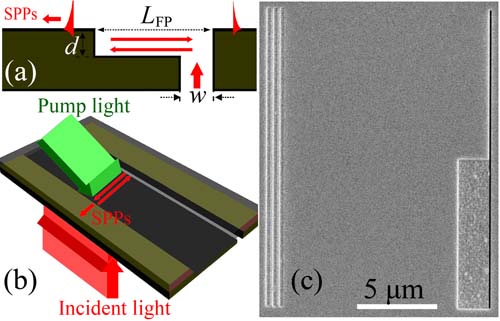All-optical control of surface-plasmon-polariton in an ultracompact asymmetric structure
Time:2011-06-30ClickTimes:
Recently, Prof. Qihuang Gong, Associate Prof. Zhi Li et al. have experimentally realized highly efficient all-optical control of surface-plasmon-polariton generation based on a compact asymmetric single slit. This work has been published in the online edition of Nano Letterson June 13, 2011 (http://pubs.acs.org/doi/abs/10.1021/nl201401w). Mr. Jianjun Chen, the first author of the paper and a Ph.D. candidate, played a major role in this work.
Surface plasmon polaritons (SPPs), which are confined along metal–dielectric interfaces, have attracted great attention in the field of ultracompact photonic circuits. Due to the weak nonlinear light–matter interactions and the short propagation distances of nanoscale–confined SPP modes, the challenge of realizing SPP modulation with a high on/off switching ratio is enormous. Therefore, the design of plasmonic structures opens the possibility for improving the device performance.
By engaging a compact asymmetric single slit coated with a photorefractive polymer, surface–plasmon–polariton (SPP) generation was efficiently controlled by a pump beam, as shown in the Figure below. In such structure, the nonlinear light–matter interaction is enhanced because of the cavity effect, which increases the sensitivity of SPPs to the surrounding dielectric. By varying the real part of the refractive index together with an interferometric configuration, high on/off switching ratios are achieved. Moreover, the SPP generation and modulation processes are integrated in the same asymmetric single slit, which makes the device ultracompact. Experimentally, a high on/off switching ratio of > 20 dB and phase variation of > π were observed with the device lateral dimension of only about 2 μm. To our knowledge, this is the highest on/off switching ratio in such an ultracompact device.
This work was supported by the National Basic Research Program of China (973 project), National Natural Science Foundation of China, and State Key Laboratory for Mesoscopic Physics.

|
All-optical control of SPP generation based on an asymmetric single slit
|
